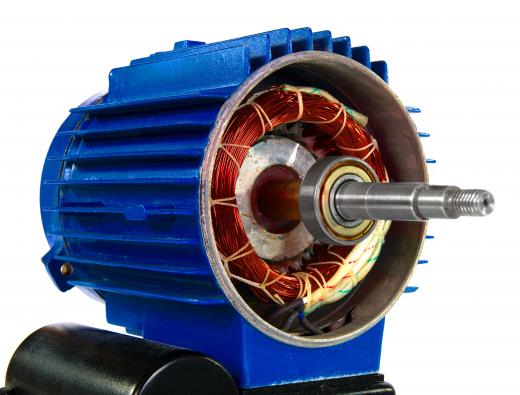An asynchronous motor is an alternating current (AC) electric motor that utilizes an induced current in its rotor rather than a physical power supply to produce its rotational motion. Most electric motors rotate as a result of the interaction between the electromagnetic fields created in the stator and rotor of the motor. In an asynchronous motor, the field generated in the windings of the stator are produced by connecting them to an AC power supply. The field generated in the rotor is not supplied by the direct introduction of a current but rather through the transformer-like induction of current courtesy of the stator's adjacent electromagnetic field. Most larger AC motors in industrial or domestic applications are asynchronous motors.
Also known as induction or squirrel-cage motors, asynchronous motors consist of two main components. The first is the stator, i.e., the barrel-shaped exterior frame of the motor. The stator of an asynchronous motor has a number of windings or coils laid out along its inner surface, each of which include a set of electrical connections on the outside of the frame. The second major component is the rotor — a cylindrical core which fits closely inside the stator. The motor's shaft, which supplies the rotational work, runs through the middle or the rotor and is supported on either end by bearings. In an asynchronous motor, the rotor is either solid steel or made up of a series of parallel steel or copper bars with no facility for electrical input.

Most AC motors rely on the polar relationship of separate electromagnetic fields generated in both of these parts to spin the rotor. In an asynchronous motor, the stator's electromagnetic field is generated by an AC power supply connected to the stator windings. The rotor, however, is not directly connected to any power supply but rather develops an internal electric current by means of induction. This induction is caused by the close proximity of the stator's electromagnetic field. This is exactly the same process used to generate current in the secondary windings of a transformer. The current produced in the rotor then generates its own electromagnetic field, and the rotor begins to spin.
The asynchronous motor is ideal for heavy duty applications due to its simplicity and ruggedness. The lack of additional slip rings and brushes needed to supply power to the rotor make this type of motor one of the most reliable and efficient AC motor designs. Asynchronous motors can also be used as generators if run above certain speeds.
